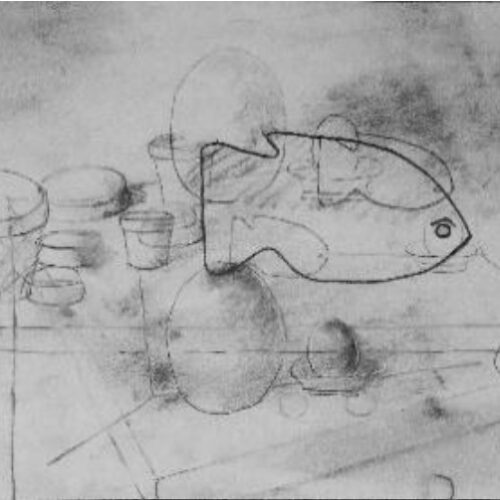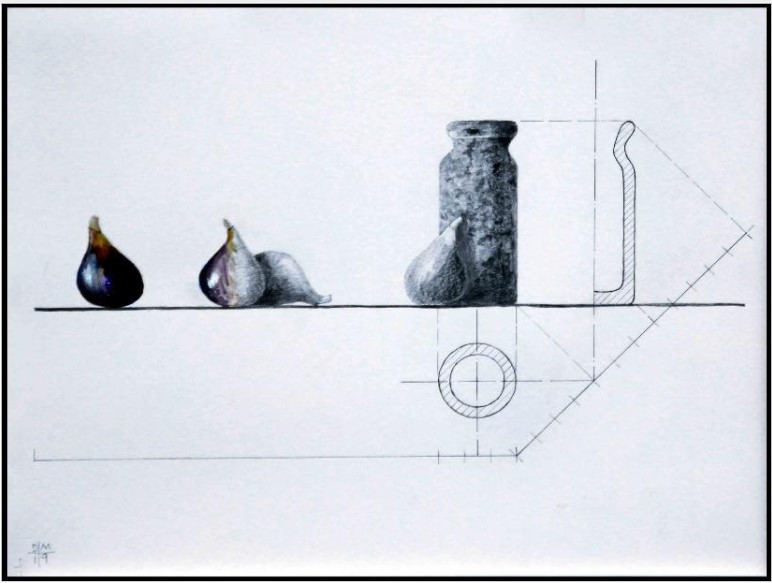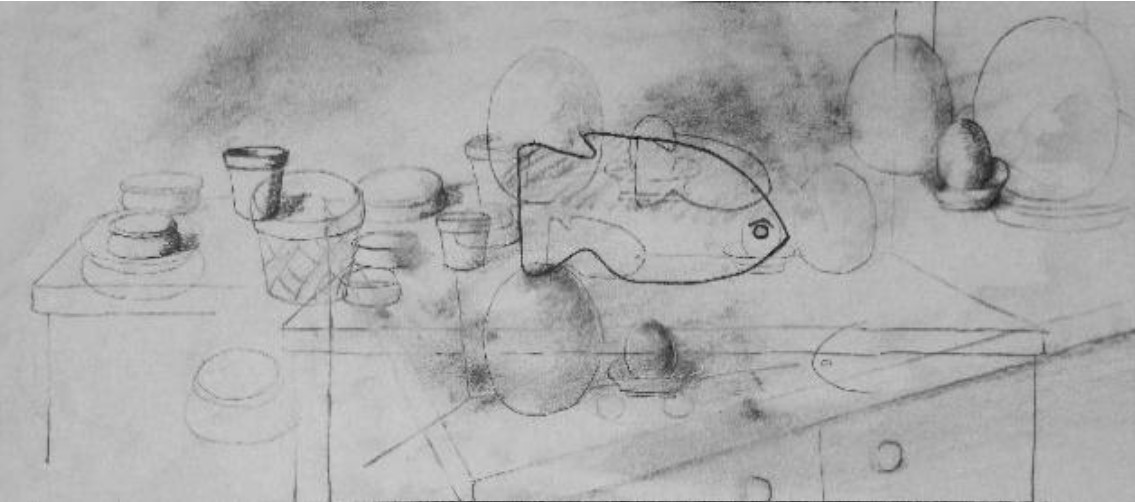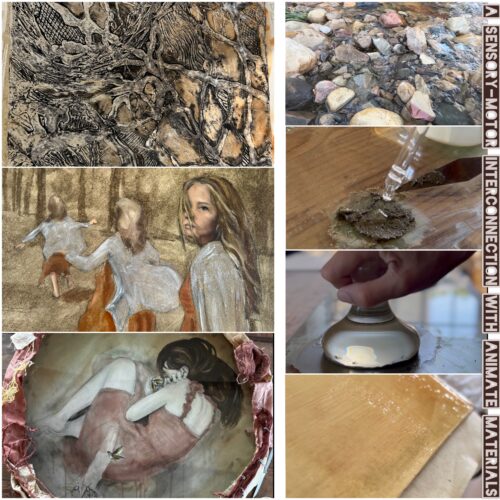
Student stories: David McGuire
David McGuire is a Level Three painting student. He has recently had work exhibited in group shows organised by arts societies of which he is a member. In this short interview he speaks a little about that process and what it means for his wider practice.
You’ve had some success in entering work made while studying into exhibitions. You’ve even won prizes. Can you tell us about this?
For a few years prior to enrolling with OCA I belonged to a couple of art societies. Such societies aren’t everybody’s cup of tea, but they do provide a platform for aspiring artists to show their work. My societies exhibit annually (except through the pandemic) in quite prestigious municipal galleries and a lot of the public get to see the work. I also enter regional exhibitions, and my acceptance rate is increasing thanks to the knowledge gained through study and experience. This summer I entered the Royal Birmingham Society of Artists Friends Exhibition. Six artists were awarded Highly Commended Certificates (there were no first, second or third places) and I was one of them. This was pleasing as the standard this year was the highest I’ve seen, perhaps due to a lot of work being made in lockdown.
Congratulations. Can you describe one or two of the pieces and perhaps walk us through the decision-making processes you went through? Things like how you selected pieces to submit, picking a frame, settling on a title and so on?
The pieces that have been most successful for me so far have been semi-abstract. It is important to develop your own style and hone it; to try and do something different. If it is an art society exhibition, remember that all art societies have a large number of traditional workers who have developed their art over many years to a phenomenal standard and are difficult to compete with on a like for like basis, especially if there is limited wall space making the acceptance level restrictive. Curators of exhibitions do like work that is fresh and not so ‘dyed in the wool’, so if you can find something that is of a good standard and away from the perceived ‘run of the mill’ you’re halfway there.

One my successful pieces is titled ‘Transformation’ 2019 (acrylic and pencil on paper, 34 x 43cm). It is a still life that features figs and pottery, and starts fully painted but gradually transforms into a pencil drawing. The drawing is half illustrative and half technical, taking the whole thing into another zone.

Another is ‘Palimpsest #2’ 2021 (pencil on paper, 38 x 20cm), a semi-abstract pencil drawing. It features a worktop with ornaments that are unintentionally rearranged every time the worktop is cleaned. It therefore becomes a record of the passage of time. The palimpsest process of destruction and reconstruction caused by erasure and redrawing gives enormous depth and each time I look at this drawing I see or perceive something different.
Framing the work is vitally important. If you feel that a drawing or painting on a piece of paper looks good just think what it may look like framed. It often transforms an image, perhaps doubling the visual value of the piece.
Be careful in selecting your frame. Will it have a mount that gives an extra dimensional margin around the work? Both of the pieces that I have shown did have mounts which increased the frame size and added visual value to the work. Sometimes I frame the piece without a mount. It depends on the work.
I don’t like ‘fussy’ frames or frames that are too big. Having said that, Howard Hodgkin produced some quite small paintings in enormous frames, and they really worked. So, I recommend that you spend some time with your framing, as the viewer sees the whole entity, not just the work.
Was the process of entering work for these exhibitions complex?
Not really. Generally there is an initial application form stating the artist’s name, the title, medium and price of each work, and at this point any required entrance fees are paid.
Pre-pandemic, artists took their work to where selection was to take place, usually the gallery. They had to then collect any unselected work, and after the exhibition, collect any work that was not sold. During the pandemic, selection was by way of digital images with the artists only taking work to the gallery that had been selected. Although digital submission is a lot less work, it is far better for the actual work to be viewed by the selectors than from photographs. I have had rejections where a piece has not photographed particularly well, whereas if it had been viewed ‘in the flesh’ it may have had a better chance of acceptance.
Aside from getting the approval of others, can you explain how it feels to get work framed and ‘finished’ for exhibition? Does it change your relationship to the work or make you feel different about it?
Most certainly. There is of course a cost element to framing, so a piece that I prepare for an exhibition I have to be enthusiastic about it to begin with. One of the really exciting things in making work is seeing it framed for the first time. If the right choices have been made, it can double the visual value of the piece, both to me as the artist and I also think to the viewer. It mustn’t be forgotten that the viewer sees the whole thing, and it can be the difference between whether or not the work is sold.
My philosophy is that if I have ‘sweated blood’ over a piece, why not present it to its best potential?
But the biggest reward, however, is when I sell a piece. For someone to actually part with their cash for a piece of my work – well there’s no other feeling than this. For any artist, this keeps them going.
Does seeing your work amongst the work of others change how you see your work? Has it changed the way you approach new work at all?
Seeing my work in the midst of works by other artists can be a great leveller, and it certainly helps me to see where I am at a particular time. It is not important to think if I am better or worse than them, it is to discover things from others that will help me to develop. Work is transient, it moves on, and what will I be doing next year? I do not copy styles or follow trends, but seeing what others do may have some subliminal influence on what comes next.
Any other plans to show work publicly now that we’re getting back to something like normal?
Yes. There are exhibitions opening up now that had disappeared over the past eighteen months or so and I’m looking forward to them.
The pandemic robbed me of my first solo exhibition, but I’ll put that on ice until after SYP. Come to think of it, I can use my public showing of my Major Project as my first solo.
|
|







Congratulations on your success! I love your Palimpsest drawing!
Thanks Geraldine
Congratulations David. Your aporoach to Transformation is fascinating.
Sonia
Thanks Sonia
Hi could I ask advice on showing in gallery space. Would you negotiate a percentage of commission if artwork is sold or have you found that you have to pay up front for the cost of the venue ? I am a real newbie so was wondering
Hi Katie
Thanks for getting in touch.
Exhibitions seem to be coming back, so look for advance publicity.
If you are submitting as an individual rather than as part of an organization, usually there is an entrance fee payable when you submit the application form. The gallery has standard terms and conditions of entry, which state how much commission they will take on sales. This can be quite steep, around 35% is not unusual. So with framing costs, entry fee and commission, this really bumps the price up.
Hope this is helpful.
Best, David
Thanks for sharing this. So inspiring to read about a fellow student’s achievement at such a high level. Very well done.
Thanks Anne
Really interesting drawings David, I love the way you concern yourself with the way drawings and paintings are constructed.
Wonderful work, such thought-provoking, beautifully drawn drawings.Thank you for sharing.